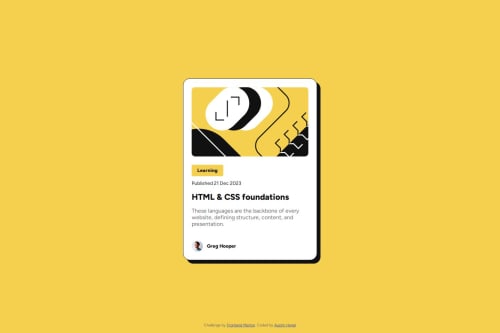Submitted over 1 year agoA solution to the Blog preview card challenge
Blog Preview Card using CSS
@astnio

Solution retrospective
What are you most proud of, and what would you do differently next time?
I am not sure what else I would do differently next time, as all I used was basic CSS and HTML.
What challenges did you encounter, and how did you overcome them?It was difficult to find out what the challenge asked for when it said "try not to use media queries." I had a hard time figuring that out, and ended up using media queries anyway.
What specific areas of your project would you like help with?I would like to know more about solutions not using media queries for changing the font size at different screen sizes.
Code
Loading...
Please log in to post a comment
Log in with GitHubCommunity feedback
No feedback yet. Be the first to give feedback on Austin's solution.
Join our Discord community
Join thousands of Frontend Mentor community members taking the challenges, sharing resources, helping each other, and chatting about all things front-end!
Join our Discord